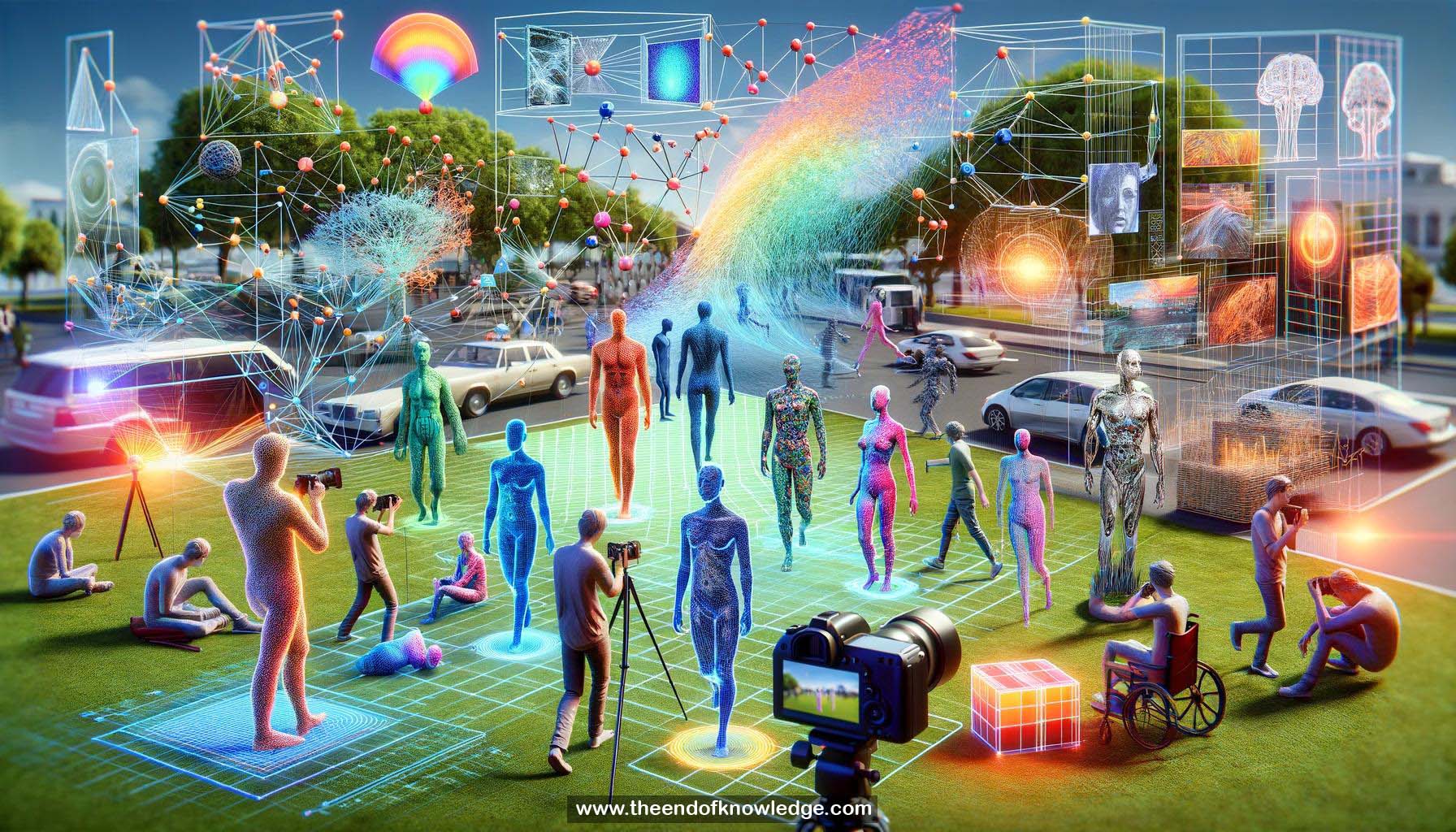 >
>
Concept Graph & Resume using Claude 3 Opus | Chat GPT4o | Llama 3:
Resume:
1.- Learning depth of moving people using frozen people dataset (Mannequin Challenge).
2.- Classical stereo algorithms assume rigid scenes, unsuitable for moving objects.
3.- Data-driven approach using Mannequin Challenge dataset with stationary people.
4.- Dataset spans various scenes, poses, and number of people.
5.- Structure-from-motion and multi-view stereo recover camera poses and depths.
6.- Multi-view stereo depth maps used as ground-truth for training neural network.
7.- Single-image depth prediction ignores 3D information in neighboring frames.
8.- Optical flow between reference and neighbor frames converted to depths using camera poses.
9.- Inaccurate depths from moving people masked out using segmentation.
10.- Full model inputs: RGB frame, segmentation mask, depths from motion parallax, confidence map.
11.- Network learns to inpaint masked human depth and refine entire scene depth.
12.- Model applied to moving people videos during inference.
13.- Outperforms baseline RGB-only, motion stereo, and single-view methods on TUM RGBD dataset.
14.- Qualitative comparison shows model's depth predictions most similar to ground truth.
15.- Accurate and coherent depth predictions on regular internet video clips.
16.- Depth predictions enable visual effects like synthetic defocus and focus pause.
17.- Synthetic objects inserted and occluded using depth predictions.
18.- Novel view synthesis using near-field and nearby frames to fill occlusions.
19.- Human regions effectively inpainted using depth predictions when camera and people move freely.
20.- Code and dataset released on the project website.
Knowledge Vault built byDavid Vivancos 2024